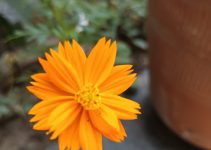Valerian
Valeriana officinalis
This upright perennial herb, also called garden heliotrope, is topped with white to pinkish-white fragrant flowers in midsummer. The blooms were once used in perfume production. Cats also find the plant attractive and may rub against the foliage as they do with catnip. Valerian attracts butterflies to the garden. Remove spent flowers to prevent the plant from self-sowing.
Light: Part sun, Sun
Type: Herb, Perennial
Height: 3 to 8 feet
Width: 2-3 feet wide
Flower color: Pink, Yellow
Seasonal features: Summer bloom
Special features: Attracts birds, Cut flowers, Fragrance
Zones: 4-9
Growing Valerian
A tall perennial, valerian (Valeriana officinalis) produces clusters of (usually) white flowers that attract butterflies and bees. It offers a nice screen for the back of an herb patch, especially if grown near a fence or other support. Provide valerian with full sun for at least 6 hours a day. It likes a nitrogen rich soil that drains well and appreciates plenty of moisture. I maintain my plants on a low spot in the garden that tends to pool — briefly– after a heavy rain.
Valerian can grow to about 5 feet high and more than a foot across, so give it plenty of space. It is hardy in zones 4 through 9. Treat valerian respectfully by giving it a layer of mulch spring and fall.
Spring and fall are also the best times to harvest valerian’s roots and thin plants as needed. It can get raggedy and neglected looking after a couple of years and benefits from some tough love.
Cats enjoy valerian almost as much as they love catnip. Valerian is also reputed to attract vermin like mice and rats. I haven’t had problems with that, but cats are a regular presence in my garden, so they may be acting as a natural pest repellent.

